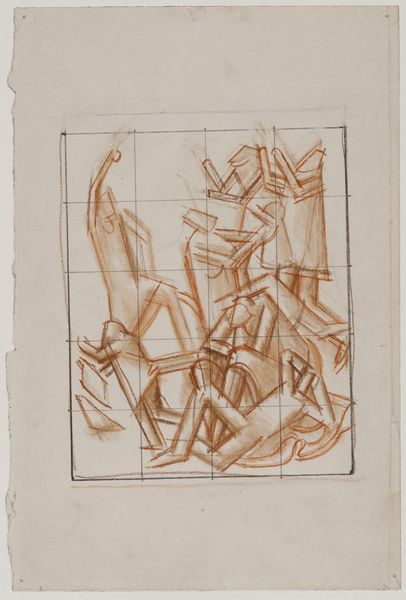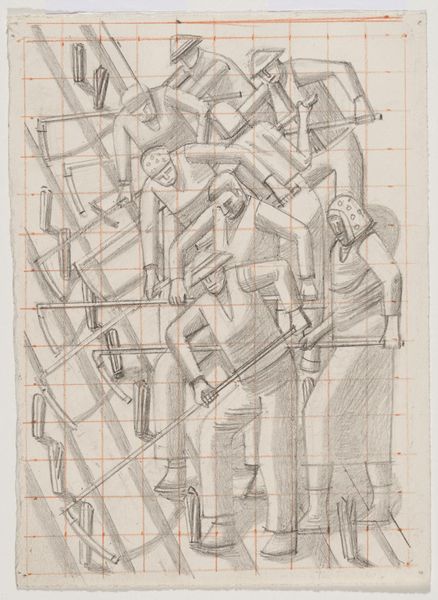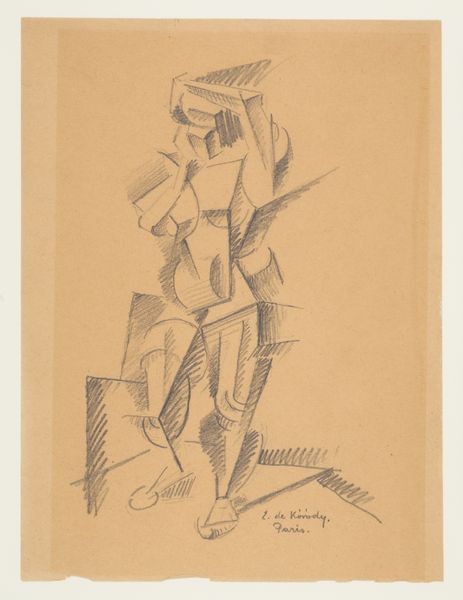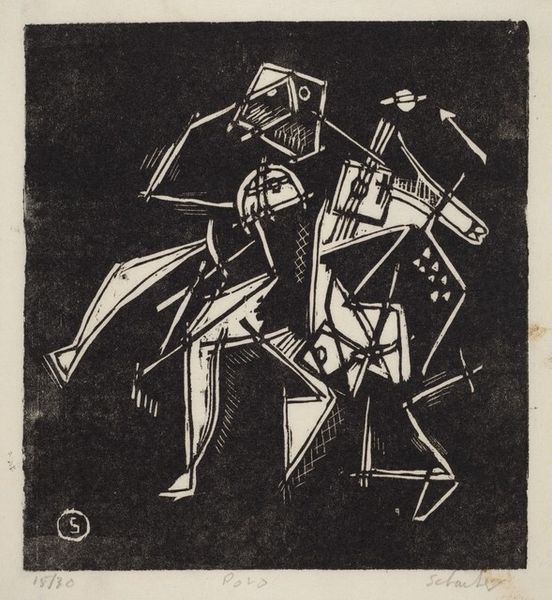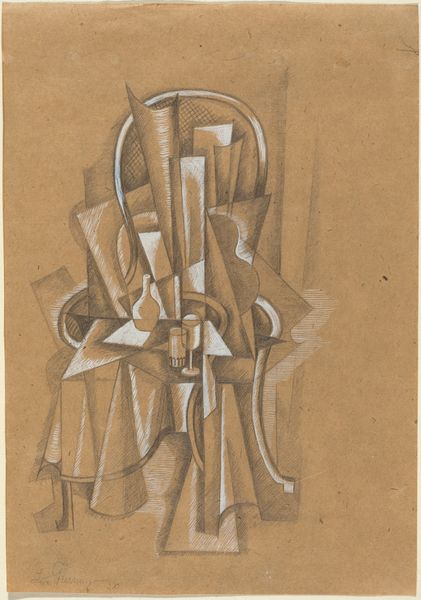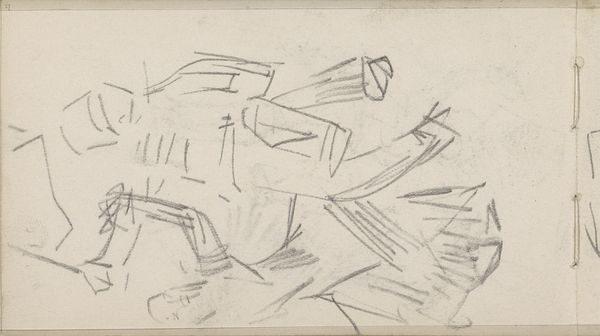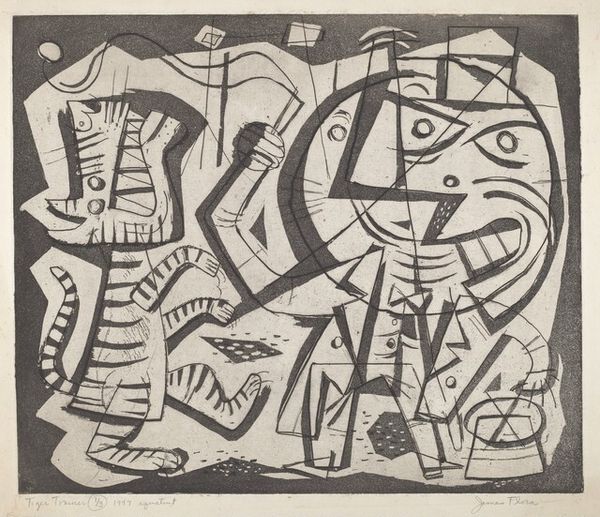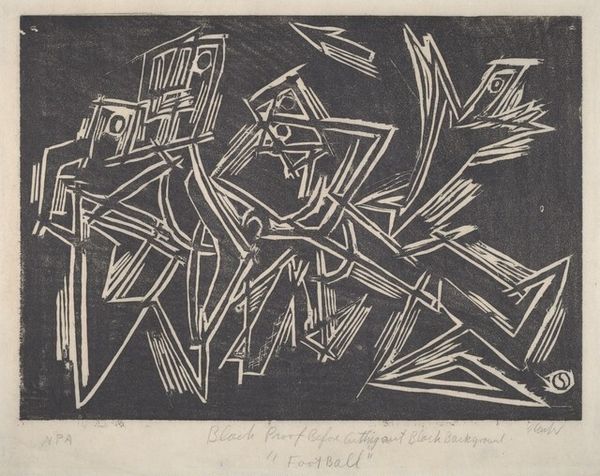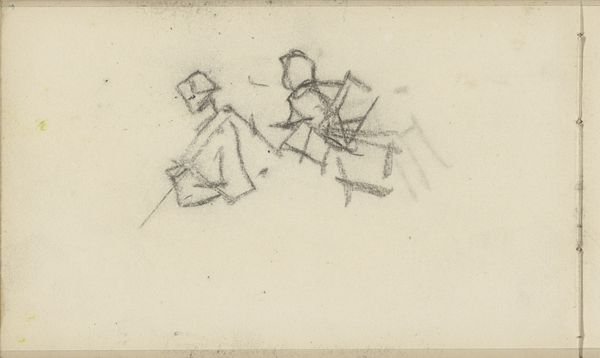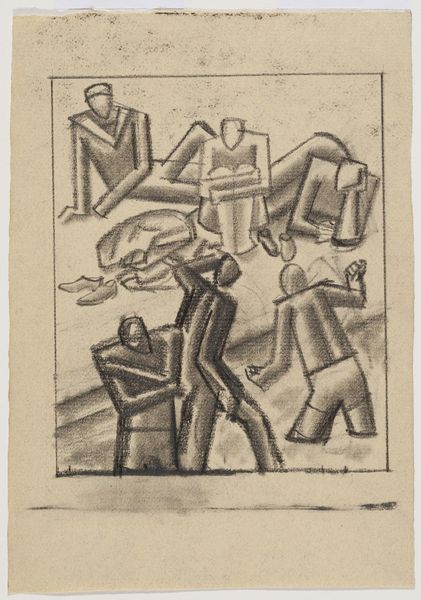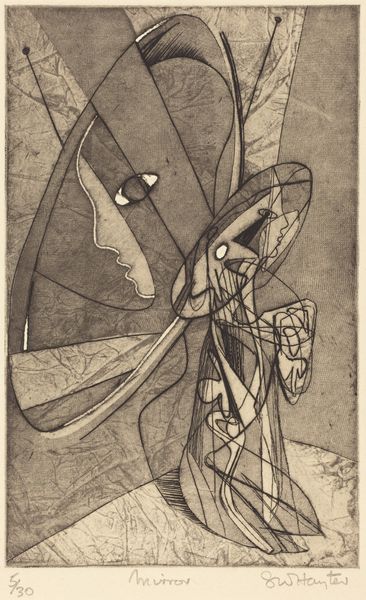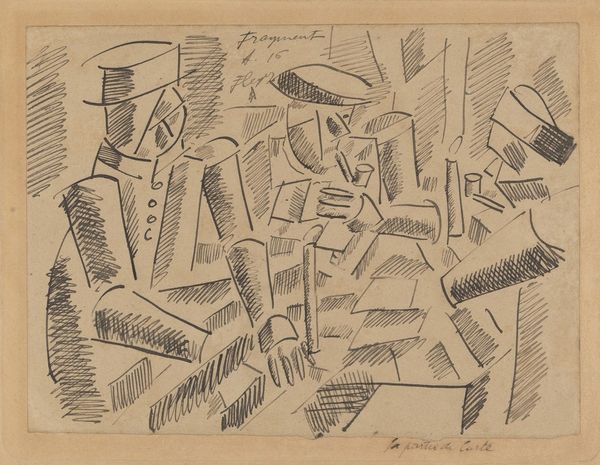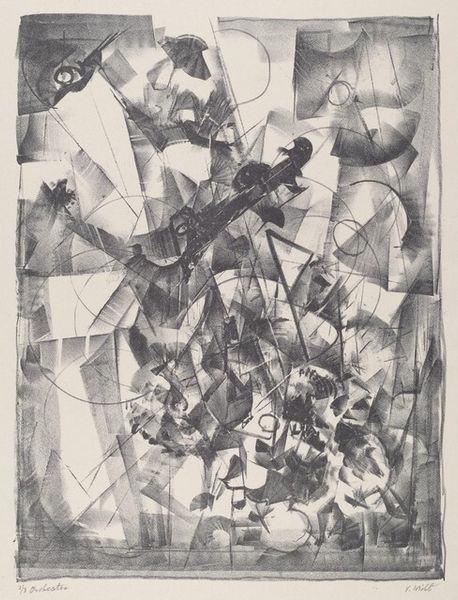
drawing, paper
#
drawing
#
high-renaissance
#
figuration
#
paper
#
geometric
#
13_16th-century
Copyright: Public Domain
Curator: Let’s turn our attention to a drawing here at the Städel Museum. It's attributed to Luca Cambiaso, and its title translates to "Stereometric Figures Falling Over Each Other.” The piece, created sometime in the 16th century, uses ink on paper. Editor: Well, it's certainly striking! My immediate impression is that this arrangement of blocky, geometric figures evokes a sense of unease. They look trapped, almost struggling against each other. There's a fragility here, a vulnerability. Curator: Absolutely. Cambiaso’s process is intriguing; he simplified the human form to these almost robotic, angular shapes. What strikes me is how this abstraction, a reduction to simple geometric forms like cubes and cylinders, allows him to explore the very mechanics of the body. Consider the economics of producing figurative works, and how labor processes may have influenced an artistic style. Editor: That reduction does allow for a real study of human movement, almost a diagrammatic study. But to me, the lack of individuality suggests a deeper social commentary. Could it reflect the anxieties of the period, a world becoming more rigid and controlled? The social upheaval would influence their desire to create or document their daily routines. Curator: A fascinating interpretation! The interesting aspect is the way in which this kind of study became popular; workshops probably adopted such drawing to help improve skills across all levels of creators. So the distribution of geometric drawing in 16th-century culture influenced wider artistic training and social engagement, Editor: It brings to mind debates on the role of art in society. Is it meant to reflect reality, or to offer alternatives? This piece does neither, exactly; instead, it seems to dissect reality and perhaps propose a new visual language altogether. Curator: I agree. And regardless of any particular narrative we impose, the piece stands as a testament to the artist’s exploration of form and structure, a precursor to later avant-garde movements and abstraction strategies. Editor: A compelling insight! I will ponder further this demonstration and synthesis of fragility, geometry, and societal implication. Curator: Indeed. It's in those very tensions that we find the enduring appeal and importance of Cambiaso’s figures, so it’s worthy of deep explorations and examinations.
Comments
No comments
Be the first to comment and join the conversation on the ultimate creative platform.
